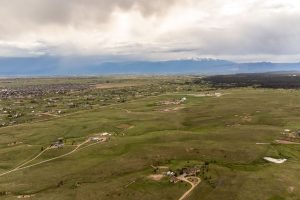Terry Stokka has lived in Black Forest for 29 years. He is president of the Friends of Black Forest, chairman of the Black Forest Land Use Committee and chairman of the Black Forest Water & Wells Committee.
You may have already heard about the new initiative in the water world that is coming to Falcon. Known as the Falcon Area Water and Wastewater Authority (FAWA), this plan proposes to extract water from three developments along Hodgen Road and pipe it to Falcon and Sterling Ranch.All of the Falcon water providers are looking for new sources of water. A developer has been quoted to say that other than wells, there are few other options for water in the Falcon area. New wells are very expensive and have a limited life span. Deep wells all over El Paso County have been producing for many years and are declining in production. One water provider has been quoted as saying that a well that produced 100 gallons per minute (gpm) in the past was now only producing 40 gpm. That is normal for wells. It is not that the whole aquifer is declining but that the pockets of water around that well are draining out, and more water is not nearby to refill the pockets.The Black Forest Water and Wells Committee is conducting a multi-year monitoring of 64 wells in the Black Forest. The project is only two years old, but the data is showing that wells adjacent to each other can have very different static levels. This would not happen if the soil was mainly sand because the water would flow laterally to even out the level in adjacent wells. The term transmissivity means the rate at which water flows laterally back and forth. If the soil is clay and sandstone, the water flows very slowly or not at all (low transmissivity) through those mediums, and adjacent wells will have very different static levels.The deep wells that are drilled for multiple homes in developments like Meridian Ranch are in the Denver and Arapahoe aquifers below the Dawson aquifer that supplies private wells all over the county. While the state says the aquifers are sealed from each other, the Water and Wells Committee is concerned that this premise has not been proven; and, in the Castle Rock area, tests have shown that water extraction in a lower aquifer affected the level of wells above it in the next aquifer.Meanwhile, back to FAWA; the project is the brainchild of Jim Morley, developer for Sterling Ranch. He needs water for his 5,200-home Sterling Ranch property and sees the opportunity to sell water to other water providers in the area as well. Mr. Morley has purchased water rights to the lower aquifers in High Forest Ranch, Bar-X Ranch and Winsome along Hodgen Road; and plans to drill 27 wells. These wells will be connected through pipelines that will go eastward to Meridian and then south to Falcon and eventually back west to the big water tank on Vollmer and Arroya Lane. Along that pipeline is a number of water providers like Falcon, Meridian Ranch, Paint Brush Hills and others. Yet to be developed are The Ranch, with 2,200 proposed homes south of Raygor and Stapleton, TimberRidge and also his own Sterling Ranch development.The water providers in the area like the idea of getting water piped to them without having to drill new, expensive wells. It is interesting that a new development, the Jaynes property at Vollmer and Poco Road, is only at the initial sketch plan phase; yet, they are proposing that they get their water from FAWA. It is amazing to me that they would propose to get water from FAWA when no wells have been drilled and no pipelines laid.So, in the final analysis, water is precious and ambitious people are going to great lengths to buy water rights and sell that water to places that need it. Unfortunately, they are proposing to take non-renewable water from the Denver Basin. The elephant in the room is the question of how much water they will find in large quantities to quench that thirst. One of the profound mottos in the water world is ìpaper water does not equal real water.î All they have right now is water promised on paper, but it remains to be seen how much real water they will find.




